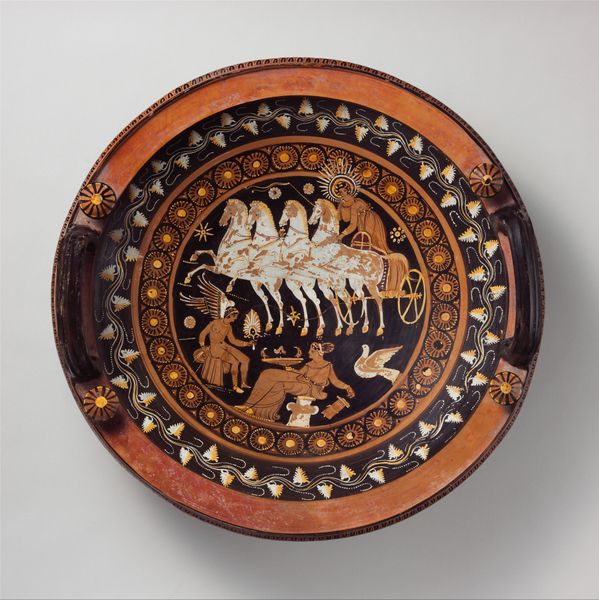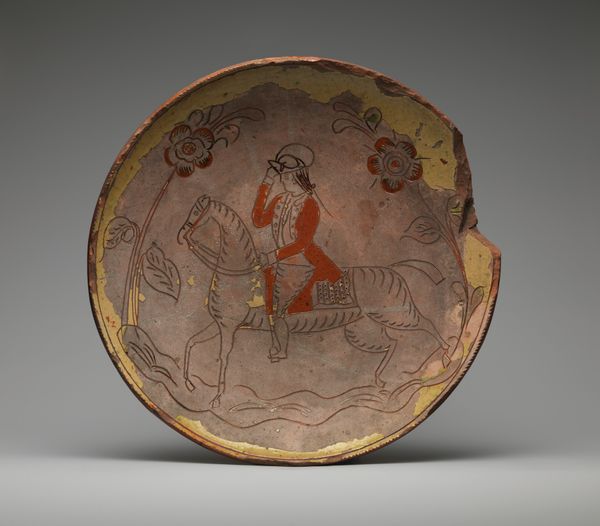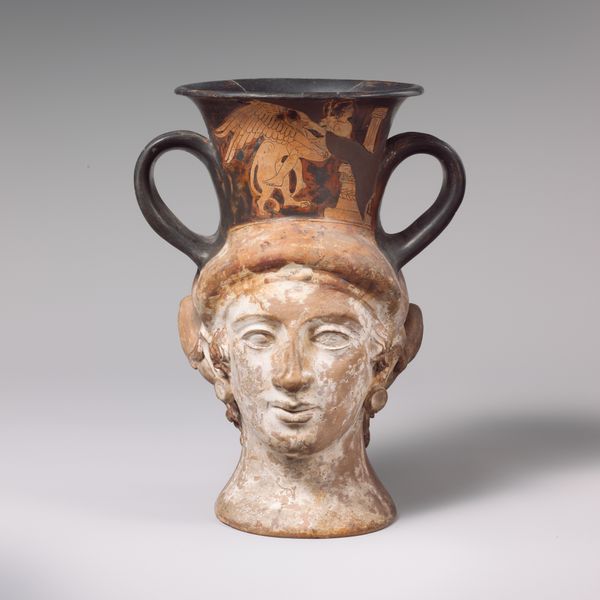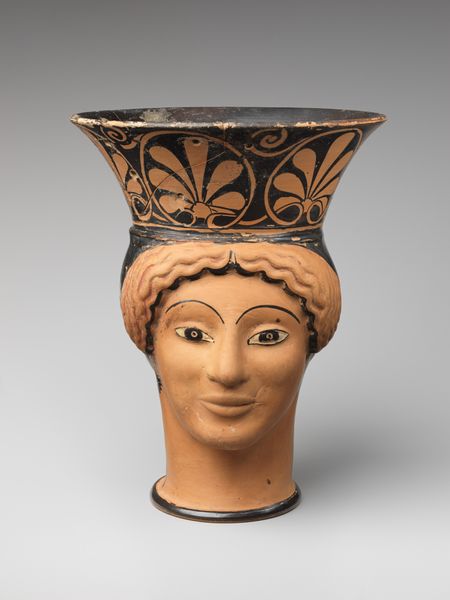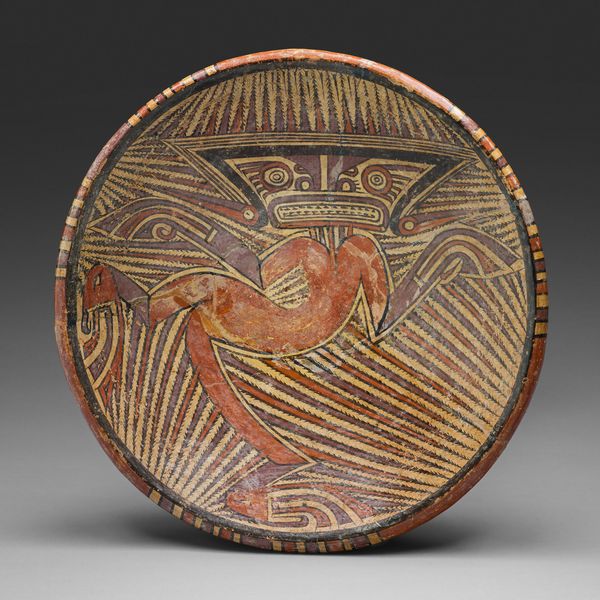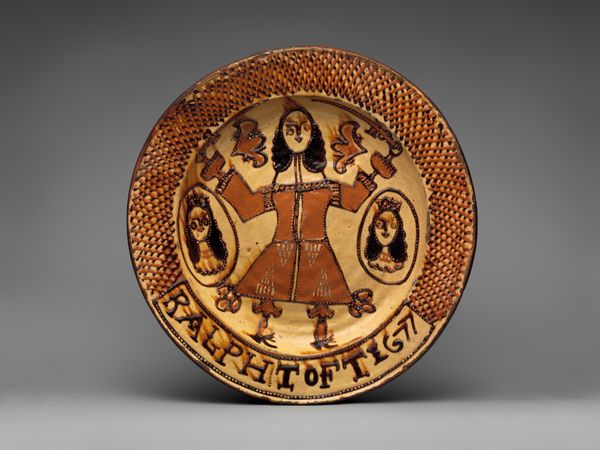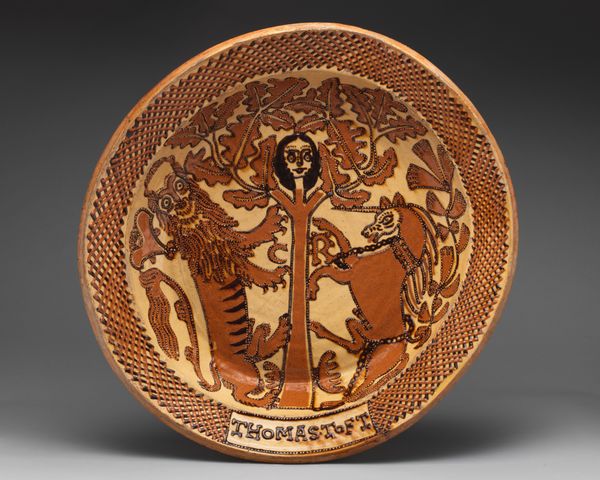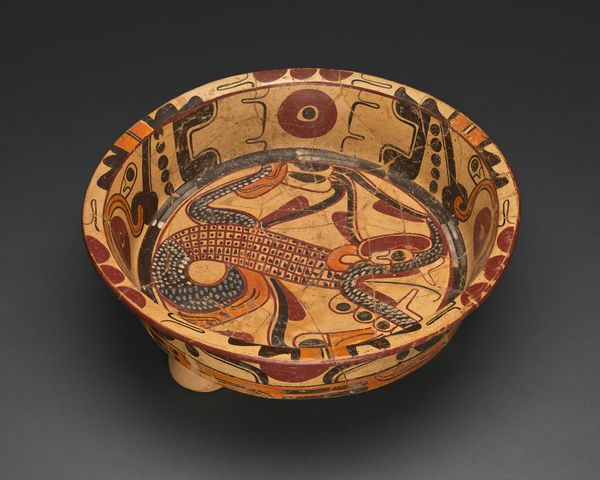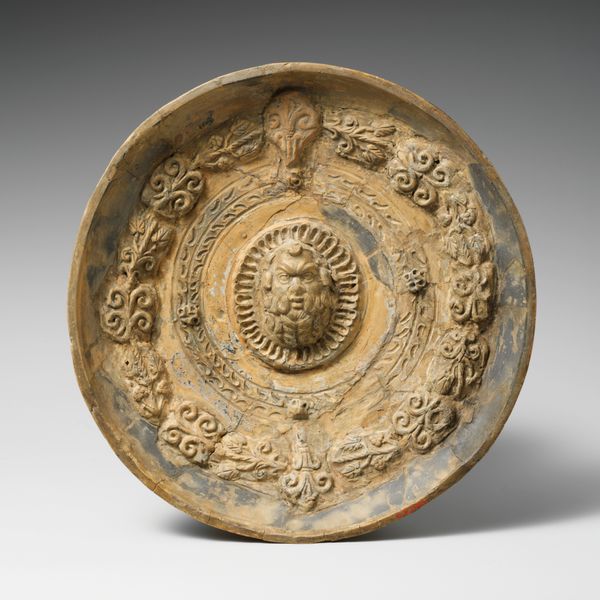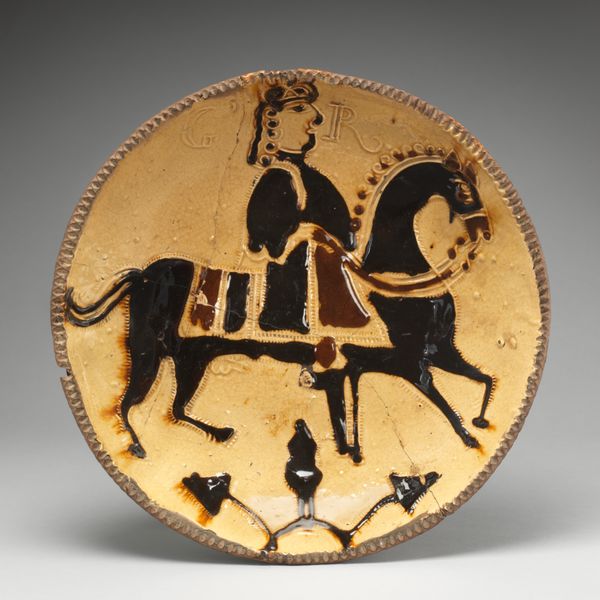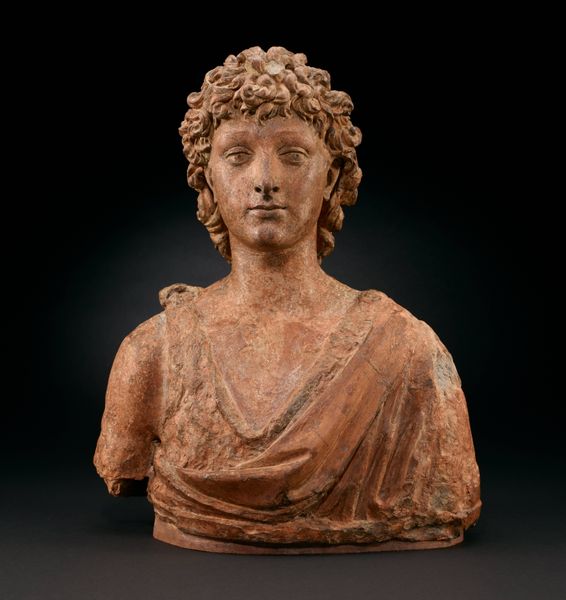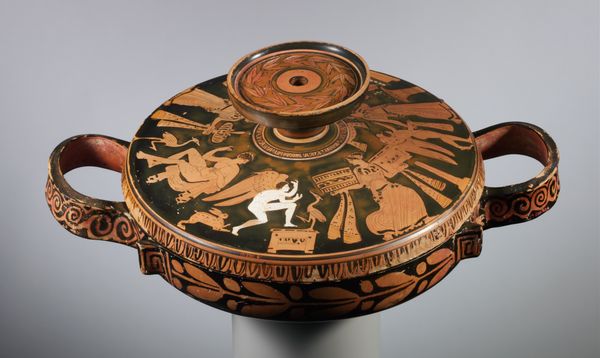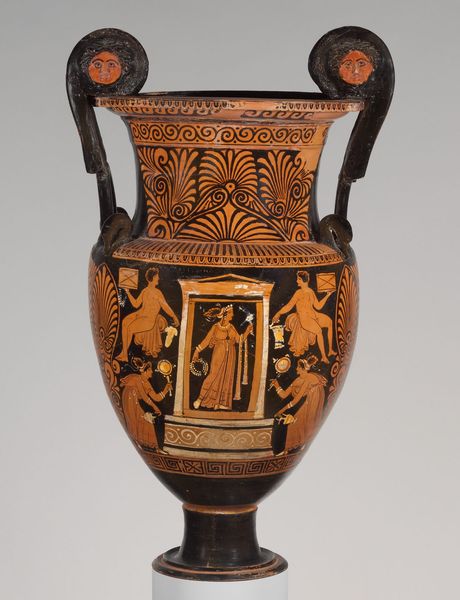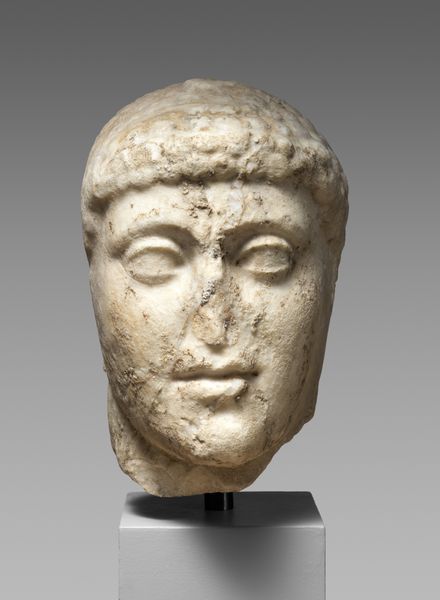
drawing, ceramic, terracotta
#
portrait
#
drawing
#
head
#
pottery
#
greek-and-roman-art
#
ceramic
#
figuration
#
roman-art
#
ancient-mediterranean
#
terracotta
Dimensions: H. 4 3/4 in. (12.1 cm) diameter 13 5/8 in. (34.6 cm)
Copyright: Public Domain
Curator: Looking at this lekanis, dating back to 325 BC, you can sense a connection to the daily life of the ancient world, right? Editor: Absolutely. It's a striking image. My immediate sense is one of calm, almost solemnity. The earth tones lend a grounded feel, despite the ornate decorations. Curator: That solemnity resonates with its function. Lekanides, like this one held by the Metropolitan Museum of Art, were shallow dishes often used for personal grooming or storing jewelry, finding a place in funerary contexts. The head encircled by laurel leaves hints at a potent, if somewhat obscured, iconography. Editor: The face certainly commands attention. There is a formality to it—those almond eyes and the delicate crown. Who do you imagine this figure to be? It makes me wonder about the identities and aspirations they valued enough to represent on such objects. Curator: The identity is unknown. What we *can* infer is that laurel wreaths, like those encircling her, were historically awarded to victors and figures of status. This symbol may communicate aspiration, success, or divinity— perhaps a deified queen, the memory of an accomplished woman, or a priestess? The symbols layer meanings of honor and timelessness. Editor: The way they rendered the waves encircling the dish adds movement to this relatively static portrait. Given its likely ritual function, do you see that symbolic contrast as communicating an active principle, a journey perhaps? Curator: Intriguing observation. The dynamic waves and the fixed central image suggest an interplay of change and permanence, typical of funeral rituals in that era. Life, death, and continuous memory. Plus the terracotta from which it's made speaks to earth, groundedness. Editor: And to make things, quite literally, public. The medium and form factor contribute, too, in communicating symbolic weight. One might even imagine it participating in the aesthetics of a symposium. It allows ordinary Romans to tangibly connect with narratives, shaping their understanding. Curator: Precisely, such pottery serves as an invaluable lens into socio-political thought of its time. Its ubiquity allowed these narratives to permeate the broader population, a visual shorthand accessible to many. The imagery provides vital clues about collective memory, the aspirations of their social life, the people's aesthetic priorities. Editor: And the psychological value too. Think about how the images reflected on this object mirror both their fears and hopes. The weight and cultural significance of this work become clearer as we look deeper.
Comments
No comments
Be the first to comment and join the conversation on the ultimate creative platform.
